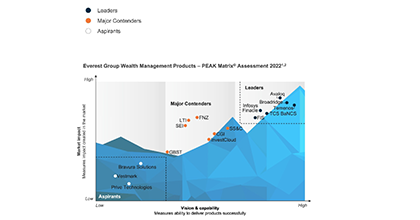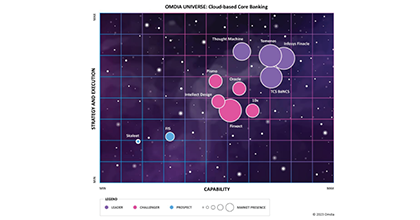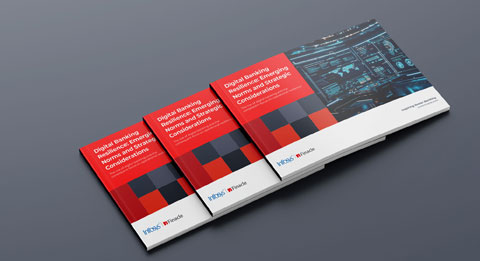The year was 1959. Barclays purchased an Emidec 11001 and laid the foundation for their computer center. With the addition of another computer in 1961, Barclays completed the first-ever banking computer center. The ’60s further saw the introduction of automated branch bookkeeping machines. For the first time, branches could update ledgers in a central computer. From these humble beginnings, banking technology has evolved significantly in the last 60+ years. The industry has seen a multitude of core banking systems, the latest one launched just four years back. As you read this, there might even be another one in the works. Some, sadly, have not made it into the 2020’s. However, even as new players emerged, a select few systems have stood the test of time, proving to be exceptionally resilient and continuing to support the dynamic needs of modern banking. This endurance can be traced back to visionary architectural choices made during their inception—choices that have rendered these systems “ageless.”
Timeless Designs and the Ageless Core
Imagine a core banking system designed not just for today but for decades to come. The concept of an “ageless core” refers to creating core banking systems that are adaptable and flexible enough to evolve with technological advancements and changing market demands. It is built on the foundation of visionary architecture that allows it to evolve gracefully without succumbing to obsolescence.
This Should Not Be Surprising, Because the Concept of Timeless Software Has Been Around for Decades.
Timeless software design aims to create systems that not only meet current needs but are also prepared to evolve with changes in technology and business environments, ensuring long-term usefulness and relevance. This design philosophy aims to make software systems robust, adaptable, and capable of handling evolving business needs and technological changes without requiring disruptive overhauls. There are some key aspects that contribute to making software design timeless: Modularity, Scalability, Interoperability, Simplicity and Maintainability, Extensibility, Use of Patterns and Best Practices, Resilience and Fault Tolerance, and Security.
In fact, these principles are at the heart of every successful software. And its no different in the world of core banking systems.
How Timeless Design Choices Make Core Banking Systems Ageless
The core banking environment has undergone substantial transformations, transitioning from the rigid, monolithic structures of the past to today’s more flexible and interconnected architectures. Amidst this evolution, there have also been various generational labels given to core banking systems, positioning newer systems as inherently superior due to their modern technological foundations. However, this idea of generational superiority can be misleading. It often overlooks the fact that some older systems, through their foundational architectural choices, continue to offer comparable, if not superior, technological agility.
If there are strategic principles that make software timeless, one could challenge the notion that newer inherently means better, and demonstrate that well-architected timeless systems can meet and even exceed the capabilities touted by “next gen” solutions.
So what are these principles?
Modern architectural constructs have their foundation in base tenets that evolved over time. Let’s look at some of these base tenets of yester-years that led the way to modern architectures and, arguably, would be the foundation for an Ageless Core:
- Modularity: The foundation of an Ageless Core is modular design, which allows for individual components to be updated or replaced without disrupting the entire system. This involves dividing software into manageable modules that could function independently but work together, laying the groundwork for component-based software engineering.
- SOA: Modularity is complemented by a Service-Oriented Architecture (SOA), which facilitates the integration of disparate services into a cohesive framework. SOA made services reusable across the network, which is fundamental to APIs. This architecture not only promotes operational agility but also enhances the system’s ability to integrate new technologies as they emerge.
- Distributed computing models: These architectures decentralized data processing from mainframes to client-server models, which evolved into the more dynamic, distributed cloud environments.
- Object-Oriented Programming (OOP): OOP’s encapsulation and modularity principles directly influence microservices architecture, which further develops SOA’s idea of breaking applications into discrete services.
- Stateless processes: form another cornerstone of the Ageless Core, ensuring that each transaction is processed independently, enhancing the system’s scalability and responsiveness.
- The adoption of open standards: further underscores its adaptability, enabling straightforward integrations with new applications and services from the broader financial technology ecosystem.
- Layered architecture: Creating distinct layers (presentation, business logic, data access, etc.) provided flexibility to update or replace one layer without impacting others, aiding adaptability to new technologies and business needs.
- Data shareability: Relational Databases pioneered the ability to efficiently store, retrieve, and manage data across systems, while networked computing facilitated data sharing across different platforms. Early relational databases also introduced flexible schemas which evolved into more dynamic, extensible data models that can easily incorporate changes without major overhauls.
- Component-Based Software Engineering (CBSE) and Enterprise Application Integration (EAI): CBSE focuses on building software from interchangeable parts, whereas EAI dealt with system and data integration across the enterprise, both fostering environments where different software components can be composed and reconfigured to meet business needs efficiently. This paved the path to composability.
- Technological neutrality: A system designed to be independent of any specific technology stack, made it easier to integrate with new and emerging technologies.
When we speak of modern architecture, it is also important to remember these base tenets from which they evolved; those that helped older systems, irrespective of when they were born, evolve seamlessly into modern systems. By understanding these architectural principles, industry leaders can better assess the true value of generational labels and focus on the actual performance and adaptability of core banking solutions.
Reference:
1. https://home.barclays/news/2019/2/from-the-archives–british-banking-s-first-computer-/
2. https://www.finextra.com/blogposting/25538/no-2-the-evolution-of-core-banking-technology–from-mainframes-to-beyond-cloud





















